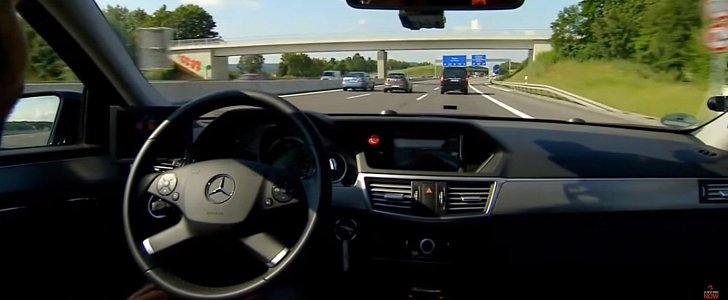Researchers have come to that point where one of the biggest hurdles that still needs clearing on the way to autonomous cars is the way the vehicle will summon up your attention whenever it is required.
It would seem that everyone agrees people will begin to ignore the road the instant their cars will become capable enough to take care of most traffic situations. And who can blame them? We've been driving for over 100 years, so we do need a break. It's like taking your dog out every day: you enjoy it, but it would be nice just to sleep in every now and again.
The thing is, it's going to be a while until they are reliably able to tackle everything the road has to throw at them. Once every car out there is basically nothing more than a big AI on wheels, navigating will become a piece of digital cake. But as long as there are human drivers mixing in with the silicon ones, there's going to be trouble.
Those are the moments your relic driver abilities will be called upon, and you'll have to put down the phone, wake up from your snooze or interrupt whatever it was you were doing (yes, even that) and grab on to that steering wheel like in the good days. The problem is, how will the car be able to invoke the driver's full attention in the most reliable way.
Right now, it seems like visual and audible signals are the answer, but a team of researchers from the Technische Universität München, in Munich, Germany, and the Delft University of Technology, in Holland believes it has found a better way. “Vibrotactile displays have been shown to be effective as warnings and hard to ignore,” says Sebastiaan M. Petermeijer, a Ph.D. candidate in the ergonomics department at Technische Universität München quoted by Spectrum IEEE.
That makes sense since the brain seems to react faster to tactile stimuli than those coming from the other senses. However, they advise the use of vibrotactile warning systems together with the already existing ones, arguing that apart from summoning the driver's attention, they can also make it clearer where the danger is coming from. Much like the audio signals of your parking sensors, the vibrations under the driver's seat could intuitively inform them which side of the vehicle the hazard is coming from.
The issue of the driver being overwhelmed - and thus confused - by the assault on his or her stimuli also came up. The researchers think that vibrotactile inputs would not add to the alarm's complexity in any way as far as its decoding by the brain is concerned. What's more, they postulate that different alarms should be used depending on the gravity of the situation, so when all lights, beeps and vibrations go off, you know you're in trouble.
And that's precisely the problem: it's not HOW you get the driver's attention that's important, but WHEN. In most cases, the car will probably fail to predict the dangerous situation early enough to give the driver enough time to grab the controls, assess the environment, and make the right choice. THIS is the real hurdle that autonomous cars need to jump.
The thing is, it's going to be a while until they are reliably able to tackle everything the road has to throw at them. Once every car out there is basically nothing more than a big AI on wheels, navigating will become a piece of digital cake. But as long as there are human drivers mixing in with the silicon ones, there's going to be trouble.
Those are the moments your relic driver abilities will be called upon, and you'll have to put down the phone, wake up from your snooze or interrupt whatever it was you were doing (yes, even that) and grab on to that steering wheel like in the good days. The problem is, how will the car be able to invoke the driver's full attention in the most reliable way.
Right now, it seems like visual and audible signals are the answer, but a team of researchers from the Technische Universität München, in Munich, Germany, and the Delft University of Technology, in Holland believes it has found a better way. “Vibrotactile displays have been shown to be effective as warnings and hard to ignore,” says Sebastiaan M. Petermeijer, a Ph.D. candidate in the ergonomics department at Technische Universität München quoted by Spectrum IEEE.
That makes sense since the brain seems to react faster to tactile stimuli than those coming from the other senses. However, they advise the use of vibrotactile warning systems together with the already existing ones, arguing that apart from summoning the driver's attention, they can also make it clearer where the danger is coming from. Much like the audio signals of your parking sensors, the vibrations under the driver's seat could intuitively inform them which side of the vehicle the hazard is coming from.
The issue of the driver being overwhelmed - and thus confused - by the assault on his or her stimuli also came up. The researchers think that vibrotactile inputs would not add to the alarm's complexity in any way as far as its decoding by the brain is concerned. What's more, they postulate that different alarms should be used depending on the gravity of the situation, so when all lights, beeps and vibrations go off, you know you're in trouble.
And that's precisely the problem: it's not HOW you get the driver's attention that's important, but WHEN. In most cases, the car will probably fail to predict the dangerous situation early enough to give the driver enough time to grab the controls, assess the environment, and make the right choice. THIS is the real hurdle that autonomous cars need to jump.

